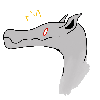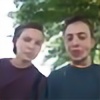HOME | DD
 Enothar — Subject: BA-XX94
Enothar — Subject: BA-XX94

#creaturedesign #monsterdesign #scp #scpinspired #plantmoster
Published: 2019-11-17 21:38:11 +0000 UTC; Views: 37734; Favourites: 1066; Downloads: 83
Redirect to original
Description
The next entry in my collection of SCP-inspired creations - using the seventh prompt in the 30-Monster-Challenge - “Plant.”
Subject: BA-XX94
Referred to by some locals as the “kissing plant,” this anomaly was discovered in the southern region of the Congo. Since it was initially identified, a total of five instances have been retrieved and placed in containment, with an unknown number still remaining in the wild. Each captive instance is housed separately, with containment consisting of a large greenhouse designed to emulate their natural jungle habitat. The environment must be kept at optimum levels - with plentiful water and enriched soil - so as to prevent it from attempting to relocate or otherwise exhibiting Phase 2 behavior.
Phase 1 behavior is its most passive (and most manageable) state, in which it remains stationary with its roots extended into the soil, drawing in water and nutrients as any other plant would. While capable of photosynthesis, it does not appear to rely on it as its primary energy source, perhaps due to the limited light available on the jungle floor. It will often situate itself in an area where humans have recently traveled, such as near trails, with the first instance being discovered in surprisingly close proximity to a settlement. Once it detects a human near its location, it will emit a powerful chemical pheromone, which has the function of both pacifying and attracting said individual. The scent has been described as very sweet, and while it can vary somewhat by individual, it is most commonly compared to vanilla, or almond. It has been noted that prolonged exposure to this chemical will lead to a deterioration in reaction time and motor function, as per heavy sedation, with an eventual risk of dangerous drops in brain activity and even permanent damage.
Once approached by a human, the anomaly will open its “face” and present it at approximate head-height. A human under the effects of the pheromone is compelled to place their own face inside the flower-like opening, which will then completely enclose the individual’s head before going motionless - both subjects will remain in this state for anywhere between a few seconds to a few minutes. The human is then released, and the composition of the pheromone appears to reverse, causing the individual to move as far away from the anomaly as possible before the effect wears off.
Post-interaction examinations have revealed deposits of what resembles large pollen spores and nectar, typically adhered to the skin and hair, though it has also been found in the nasal passage and esophagus; if left unchecked, these deposits will grow increasingly irritating, causing symptoms such as swelling, itching, and/or burning. Additionally, the effects of the nectar in particular appear similar to that of opioids - during and following ingestion, it may act as a pain suppressant and sedative. However, it has likewise been shown to be highly addictive, perhaps as a means of driving humans to return to it at a later time. Other side-effects of interaction have included: periods of lower sensitivity to smell or taste; periods of increased anxiety and/or depression; and in some cases, gastrointestinal discomfort, ranging from mild to severe. Long-term studies are still ongoing, but the current consensus is that this anomaly is specialized to utilize humans as pollinators, in a similar manner to various non-anomalous flora that are adapted to attract - and use - specific species.
Should this anomaly go too long without human interaction, or if it detects that its current location can no longer sustain its high energy demands, it will uproot itself and attempt to relocate to a new area. During this phase (Phase 2), it will behave similarly to an ambush predator - it will periodically go motionless with its flower fully open, until it is approached by an animal. Once a prey animal is close enough, it will rapidly extend its body and snap its flower shut around the limb or body of the animal. Thorns along the interior of the upper petals create numerous punctures and cuts, while the flower itself secretes a secondary form of chemical compound - this compound is notably toxic, and is easily absorbed via the open wounds caused by the flower’s “bite.” It will then release its prey, following it until it eventually expires. Depending on the size of the corpse, it may use it as a food source for some time before moving on, in some cases rooting itself and returning to Phase 1 behavior until all nutrients have been absorbed. Note: research is currently pending to study the effects that the introduction of a human during Phase 2 behavior will have on the anomaly.
As always, let me know what you think! Bit of a longer entry, this time.
And of course, if you have any other ideas for a creature such as this, let me know! ^_^
Related content
Comments: 52

👍: 0 ⏩: 0

👍: 1 ⏩: 0

👍: 1 ⏩: 0

Ngl it looks kinda like ivy from re2(the original)
👍: 0 ⏩: 0

👍: 0 ⏩: 0

👍: 0 ⏩: 1

👍: 1 ⏩: 0

👍: 0 ⏩: 1

Wondrous as always.
Would love to see what a bigger/ burlier "Subject" would look like, using either a large mammal (elephant, walrus, bear?) or large reptile/ amphibian (crocodile, komodo dragon, hellbender salamander) as the sort of the inspirational base of the design.
But hey, whatever's next, I look foward to it
👍: 0 ⏩: 1

Thanks!
And yes, most of the entries have been relatively small, or at least not heavy-set like the creatures you described. The next few prompts (if I continue with the current list) don't quite lend themselves to giant beasts as easily, but some of the later ones might. ^_^ Doing what I can to sort of plan ahead with these things.
👍: 0 ⏩: 0

Interesting! It seems that, in theory, someone could raise a garden of these so long as they adequately fertilized them and provided pollinators for them. Could harvest their nectar and sell it, or maybe use it for medicinal purposes.
👍: 0 ⏩: 1

Theoretically, I think so. May require some further testing, such as for any possible long-term effects. But, like opiates, I think it could eventually be viable with some refinement.
👍: 0 ⏩: 0

Absolutely! Please please please let me know when you open your commissions!
👍: 0 ⏩: 0

Good morning, evening, afternoon...? 
Thanks regardless!
👍: 0 ⏩: 1

Flower would appreciate it.
👍: 0 ⏩: 0

Like something out of a nightmare, very original....have you ever read an old sci fi novel called The Day of the Triffids ~ 1951 terrifying story made into a couple of frightening films and a BBC(British Broadcasting Corporation) tv series that had a whole generation of us kids hide behind the sofa because it was shit inducing scary.
👍: 0 ⏩: 1

I haven't read it, but I have heard of it. I think I might've seen a few clips of that BBC series some time ago, but at the time I had no context for those little fragments. But it'd be something to put on my list - which, since making these, I've been accumulating an ever-growing list of things I really ought to read or watch, and it's great. ^_^ So thank you!
👍: 0 ⏩: 0

This is fantastic, holy rabies Batman. I love this so much. It's friggin awesome
👍: 0 ⏩: 1

I love how the tail spirals outwards. And how you've made this concept fit. I love it
👍: 0 ⏩: 1

Thank you! ^_^ It was interesting to put together a plant monster as opposed to an animal-like one, in this case.
👍: 0 ⏩: 0

This Subject reminds me of a human-sized Venus Fly Trap. Only much more dangerous and deadly...
👍: 0 ⏩: 1

Yeah. Venus fly traps were of course one of the early ideas I considered, but then I decided to pull a little more from orchids and pitcher plants instead. Mostly orchids, though.
👍: 0 ⏩: 1

I love how much detail went into this, well done!
👍: 0 ⏩: 1

Thank you very much! ^_^
👍: 0 ⏩: 0

Worthy of a horrormovie monster.
You cannot read any kind of facial expressions, mood, or thoughts.
I think these unreadable beings are the most fascinating yet horrifying.
Similar as with Jason, Michael Meyers and other mute and expressionless dangers.
👍: 1 ⏩: 1

Yeah, unreadable villains/monsters tend to be pretty darn scary. Got that "unknown factor" going for them.
👍: 0 ⏩: 0
| Next =>































